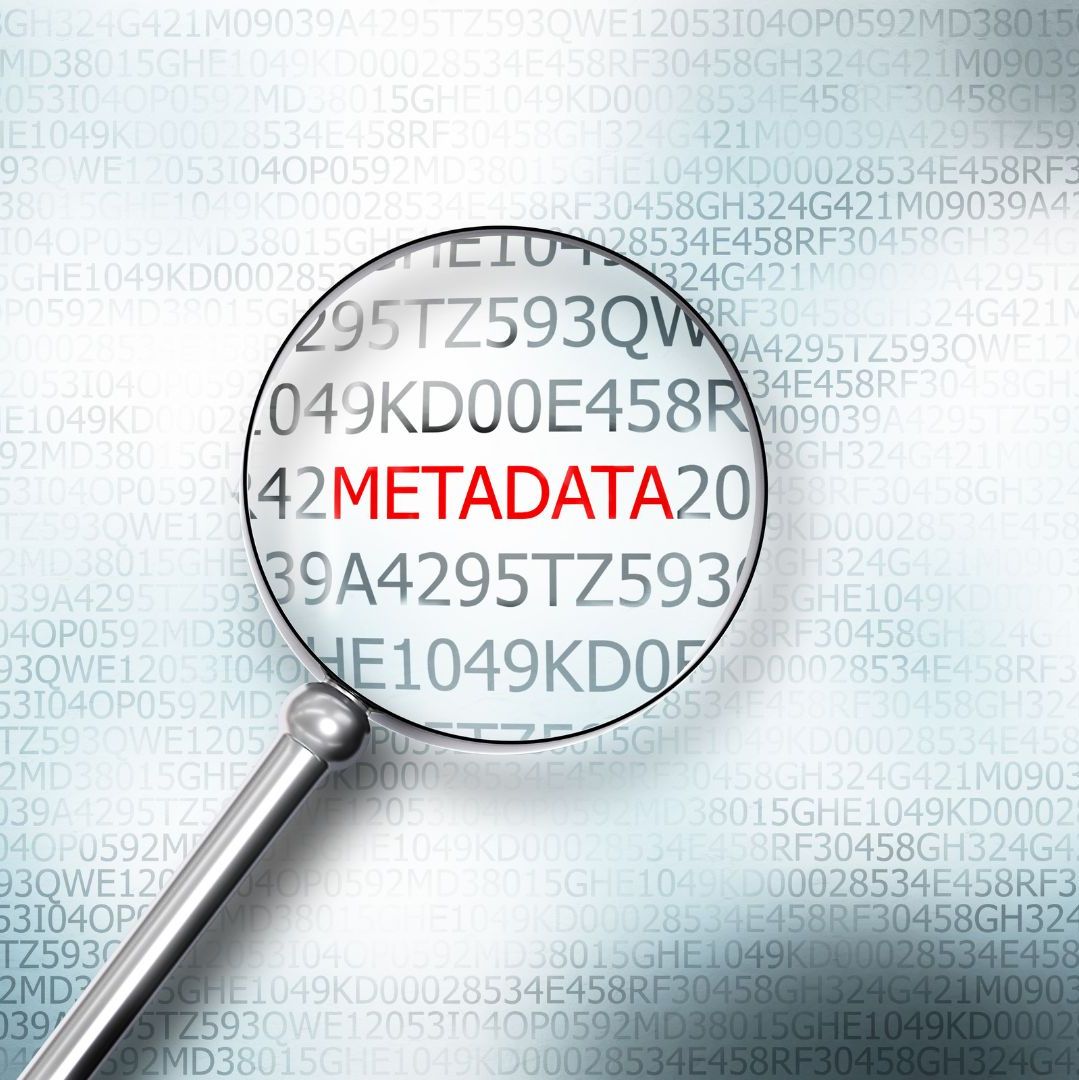Ensuring Longevity: How to Archive and Backup Interview Recordings
These FAQs address the most common questions that people may have when it comes to planning, preparing for, conducting, and analysing interviews for various purposes. These FAQs are applicable to a wide range of industries and situations, such as academic research, radio broadcasting, podcast or webinar hosting, journalism, job interviews, and many others. The information provided also delves into specific aspects of the interview process, including planning for individual or group/focus group interviews, important considerations during interviews, how to backup interview recordings, effective questioning techniques, different interview styles, and the steps to review and interpret the outcomes after the interview has taken place.
Safeguarding Your Insights: A Guide on How to Archive and Backup Interview Recordings
In the dynamic landscape of research, journalism, podcasting, and human resources, conducting interviews is a cornerstone for gathering valuable insights. However, the importance of safeguarding these recordings cannot be overstated. This article delves into the crucial realm of archives and backup interview recordings – an often overlooked aspect that can prove to be the linchpin in preserving critical information.
Defining Interviewing Backups
Interviewing backups refer to the systematic process of creating duplicate copies of interview recordings, ensuring their longevity and accessibility. Whether you are a seasoned researcher, a meticulous journalist, a podcasting enthusiast, or a human resource manager, adopting a robust backup strategy is imperative to mitigate the risk of data loss.
Best Steps For Archiving Interviews
Choosing the Right Recording Platform
Selecting a reliable recording platform lays the foundation for a successful archiving strategy. Platforms like Zoom and Microsoft Teams offer built-in recording features, simplifying the process and providing easy accessibility to backup interview recordings.

Selecting the appropriate recording platform is a critical step in establishing a successful archiving strategy for backup interview recordings. The market offers various platforms with built-in recording features, among which Zoom and Microsoft Teams stand out. These platforms not only simplify the recording process but also provide easy accessibility to backup interview recordings, making them an ideal choice for professionals engaged in interviews and remote collaborations.
Zoom, for instance, has gained popularity for its user-friendly interface and reliable recording capabilities. Its cloud-based recording feature ensures that recordings are securely stored and easily retrievable. On the other hand, Microsoft Teams offers seamless integration with other Microsoft Office applications, providing a comprehensive environment for collaboration and recording. Exploring the unique features of each platform is crucial in aligning the recording process with your specific needs.
In addition to the convenience of these platforms, it’s essential to consider factors such as recording quality, storage capacity, and compatibility with other tools in your workflow. Prioritising a platform that not only meets your current requirements but also accommodates potential future needs ensures a sustainable and adaptable recording strategy.
File Organisation and Naming Conventions
Implementing a structured file organisation system ensures that your backup interview recordings are easily retrievable. Adopt clear naming conventions, including relevant details such as date, participant names, and topic for seamless navigation.
Once the recordings are in place, implementing a well-structured file organisation system is paramount for efficient retrieval. Adopting clear and consistent naming conventions is a key aspect of this organisational strategy. Details such as the date of the interview, participant names, and the interview topic should be included in the file names to provide context and facilitate seamless navigation.
A chronological organisation based on interview dates can be beneficial, allowing for a quick overview of the archive’s evolution. Alternatively, categorising recordings by project or participant names can enhance the specificity of your organisational structure. The goal is to create a system that not only makes sense to you but is also easily understandable for others who may need to access or manage the recordings.
Moreover, investing time in creating a detailed folder hierarchy can further enhance organisation. Subfolders for each project or participant can help compartmentalise the recordings, making it easier to locate specific content. Regularly reviewing and updating this organisational structure as your archive grows ensures its continued effectiveness.
Adding an extra layer of thought to this process involves considering future scalability. As your collection of backup interview recordings expands, having an organisation system that can accommodate growth without sacrificing accessibility becomes increasingly important. Regularly revisiting and refining your file organisation strategy ensures its relevance and effectiveness over time.
Cloud-Based Storage Solutions
Explore cloud-based storage options like Google Drive, Dropbox, or Microsoft OneDrive. These platforms not only offer secure storage but also facilitate easy sharing and collaboration, making them ideal for remote interviewing scenarios.
In the ever-evolving landscape of digital data management, exploring cloud-based storage solutions becomes not just an option but a strategic necessity. Platforms like Google Drive, Dropbox, and Microsoft OneDrive offer more than just secure storage; they present a dynamic ecosystem for seamless collaboration and sharing, making them particularly advantageous for remote interviewing scenarios.
Google Drive, known for its versatility and integration with other Google Workspace applications, provides a collaborative environment where multiple users can access and edit documents simultaneously. Dropbox, with its user-friendly interface, excels in file synchronisation, ensuring that the latest versions are readily available to all team members. Microsoft OneDrive, deeply integrated into the Microsoft 365 suite, not only provides robust storage but also seamless collaboration with tools like Microsoft Teams.
While the convenience of cloud storage is undeniable, it’s crucial to consider the potential risks associated with relying solely on cloud-based solutions. Service disruptions or security breaches can occur, emphasising the importance of a holistic approach. Incorporating local backups, either on external hard drives or dedicated servers, adds an extra layer of security and ensures accessibility even in the face of unforeseen challenges, providing a comprehensive safeguard for your valuable backup interview recordings.
Local Backups for Redundancy
While cloud storage is convenient, complement it with local backups on external hard drives or dedicated servers. This redundancy adds an extra layer of security, safeguarding your recordings in the event of cloud service disruptions.
As we embrace the digital era, where cloud storage has become the norm, it’s easy to overlook the significance of local backups. While cloud storage offers convenience and accessibility, complementing it with local backups is a strategic move to enhance reliability and mitigate potential risks.
Local backups, stored on external hard drives or dedicated servers, serve as a failsafe mechanism in the event of cloud service disruptions. They provide quick and direct access to your backup interview recordings, circumventing potential downtime caused by internet connectivity issues or cloud service outages. This redundancy not only safeguards against unforeseen technical glitches but also empowers you with control over your data, particularly crucial for professionals who cannot afford any compromise in the availability and integrity of their recordings.
Considerations for local backups extend beyond mere duplication. Implementing a systematic approach to local backups involves periodic checks to ensure data integrity, testing the restoration process, and updating backup protocols as your recording archive expands. This proactive stance towards data redundancy ensures a robust and reliable system that stands resilient even in the face of the most unexpected challenges, providing peace of mind and continuity in your archival efforts.
Data Encryption for Security
Prioritise the security of your backup interview recordings by implementing encryption measures. Password-protecting files and using encrypted storage solutions ensure that sensitive information remains confidential.
In the realm of interview recordings, where sensitive narratives and confidential information are often shared, prioritising security is non-negotiable.

Implementing robust data encryption measures becomes a cornerstone in safeguarding the integrity and confidentiality of your valuable content. Password-protecting files adds an essential layer of security, ensuring that only authorised individuals can access and manipulate the backup interview recordings. Moreover, opting for encrypted storage solutions, both locally and in the cloud, ensures that even if unauthorised access occurs, the content remains indecipherable without the appropriate encryption keys.
Understanding the nuances of encryption protocols and staying abreast of industry best practices is crucial. Regularly updating passwords, adopting multi-factor authentication, and utilising encryption algorithms that adhere to the latest security standards contribute to a comprehensive security strategy. In the face of evolving cyber threats, a proactive approach to data encryption not only protects your backup interview recordings but also instils confidence in participants that their information is handled with the utmost care and diligence.
Regular Backup Schedule
Establish a routine backup schedule to prevent data loss. Whether it’s daily, weekly, or after each interview session, consistency is key to maintaining an up-to-date archive.
The adage “prevention is better than cure” holds particularly true when it comes to safeguarding your backup interview recordings. Establishing a routine backup schedule is not merely a precautionary measure; it’s a proactive strategy to prevent data loss and maintain an up-to-date archive consistently.
The frequency of your backup schedule depends on the volume and criticality of your interview recordings. For high-intensity recording environments, daily backups might be warranted to capture every nuance and prevent any loss of data. On the other hand, less frequent backups, such as weekly or after each interview session, may be suitable for scenarios with lower recording intensity.
Consistency in adhering to the backup schedule is paramount. Automated backup tools can streamline this process, ensuring that it becomes a seamless and reliable part of your workflow. Additionally, documenting the backup schedule and regularly revisiting it to accommodate changes in your recording patterns or storage needs maintains the relevance and effectiveness of your archival strategy over time. In the dynamic landscape of digital data, where unforeseen events can occur, a disciplined and consistent backup routine is your first line of defence against potential data loss.
Transcription Services for Accessibility
Enhance the accessibility of your interview content by availing transcription services. Platforms like Way With Words offer professional and highly accurate transcriptions, aiding in keyword searchability and content comprehension.
While interview recordings capture rich and nuanced content, their true potential often remains untapped without transcription services. Platforms like Way With Words offer a professional and highly accurate solution to convert spoken words into written text, significantly enhancing the accessibility and usability of your interview content.
Transcriptions play a pivotal role in keyword searchability, enabling you to quickly locate specific segments within your recordings. This not only saves time but also enhances the overall efficiency of your research or content creation process. Moreover, transcriptions facilitate content comprehension, allowing team members or collaborators to engage with the interview material more effectively, even if they were not present during the original recording.
The benefits extend beyond mere convenience. Transcriptions contribute to creating a more inclusive environment, catering to individuals with diverse learning preferences or accessibility needs. This is especially relevant in educational or professional settings where the dissemination of information needs to accommodate a broad audience. Integrating transcription services into your archival strategy not only enhances the functionality of your interview recordings but also aligns with principles of accessibility and diversity.
Metadata Inclusion for Easy Retrieval
Incorporate relevant metadata, such as participant details, keywords, and project identifiers, into your recordings. This metadata streamlines the retrieval process, saving time and effort when searching for specific interviews.
In the vast expanse of interview archives, finding specific content can be akin to searching for a needle in a haystack. This is where the inclusion of relevant metadata becomes a game-changer.

Incorporating details such as participant information, keywords, and project identifiers into your recordings streamlines the retrieval process, saving considerable time and effort. Consider participant details such as names, roles, and affiliations as fundamental components of your metadata. These details not only provide context to the recordings but also facilitate quick identification of key contributors. Keywords, representing the core themes or topics discussed in each interview, serve as navigational signposts, guiding you to the relevant content with precision. Project identifiers, especially in a multi-project environment, ensure that recordings are appropriately categorised, avoiding confusion and streamlining the organisational structure.
Implementing metadata inclusion requires a thoughtful approach. Establishing a standardised set of metadata categories and consistently applying them to each recording ensures uniformity and coherence in your archive. As your collection grows, periodically reviewing and updating metadata categories to reflect evolving project structures or research objectives maintains the relevance and effectiveness of your metadata system. In the quest for efficient archive management, metadata inclusion is the compass that guides you through the labyrinth of interview recordings with precision and ease.
Version Control for Edits and Updates
If you make edits or updates to your interview recordings, implement a version control system. This ensures that previous versions are retained, allowing you to track changes and revert if necessary.
The narrative captured in interview recordings is dynamic, subject to edits, updates, and evolving insights. Implementing a version control system is essential to navigate this fluid landscape, ensuring that the integrity of the narrative is preserved, and changes are tracked systematically.
Version control allows you to retain previous versions of backup interview recordings, enabling you to trace the evolution of content over time. This is particularly valuable in research or content creation processes where iterative revisions are common. If an edit introduces unintended changes or if you need to revert to a previous state, version control provides the necessary checkpoints to facilitate this process.
Consider utilising version control systems integrated into popular collaborative platforms or dedicated software solutions tailored to your needs. These systems often offer features such as version history, annotations, and collaborative editing, providing a comprehensive toolkit for managing changes and updates. As your interview archive grows, the ability to track and manage versions becomes increasingly crucial, ensuring a transparent and controlled editing process that aligns with the dynamic nature of interview narratives.
Disaster Recovery Planning
Anticipate the unexpected by developing a disaster recovery plan. Identify potential risks, such as hardware failures or data breaches, and establish protocols for swift recovery, minimising downtime.
In the digital landscape, where unforeseen events such as hardware failures, data breaches, or natural disasters can disrupt normal operations, having a robust disaster recovery plan is imperative. Anticipating potential risks and establishing protocols for swift recovery minimises downtime and ensures the resilience of your backup interview recordings archive.
Start by conducting a thorough risk assessment, identifying potential threats to your data integrity. This includes evaluating the reliability of your hardware, assessing vulnerabilities in your network security, and considering external factors such as environmental risks or cybersecurity threats. Once potential risks are identified, establish clear protocols and procedures for recovery, outlining roles and responsibilities to ensure a coordinated response in the event of a disaster.
Consider the geographical diversity of your backups as part of your disaster recovery plan. Storing redundant copies of your backup interview recordings in geographically separate locations mitigates the risk of losing data due to a localised incident. Regularly test your disaster recovery protocols to verify their effectiveness and adapt them as needed based on evolving risks or changes in your infrastructure.
In conclusion, disaster recovery planning goes beyond a contingency measure; it is a proactive strategy to safeguard the continuity and integrity of your interview recording archive. By anticipating and preparing for the unexpected, you not only protect your valuable data but also ensure that your archival efforts remain resilient and reliable in the face of challenges.
Key Tips For Backup Interview Recordings
- Pre-Interview Tech Check: Before conducting remote interviews, ensure that both you and your participants have tested and verified the functionality of your chosen recording platform.
- Internet Stability: To avoid interruptions, advise participants to use a stable internet connection and have a backup option, such as a mobile hotspot, in case of connectivity issues.
- Regularly update your backup systems to accommodate evolving technologies and growing data volumes.
- Conduct periodic drills to test the effectiveness of your disaster recovery plan.
In the fast-paced realms of research, journalism, podcasting, and human resources, safeguarding backup interview recordings is a non-negotiable aspect of preserving valuable insights. By adopting a comprehensive approach encompassing the right tools, meticulous organisation, and strategic planning, professionals can ensure the longevity and accessibility of their backup interview recordings.
A helpful resource is Way With Words, a leading transcription service providing accurate and professional transcriptions to assist in managing interview content effectively.
